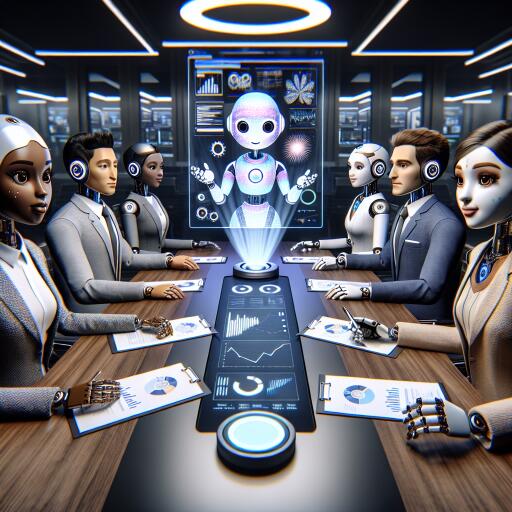Exploring the Future: GPT-5 and Llama-3’s Transformative Potential
The realm of artificial intelligence (AI) stands on the brink of a new dawn with the forthcoming updates to OpenAI’s ChatGPT and Meta’s Llama system. These enhancements are poised to redefine the landscape of human-machine interactions, providing unprecedented levels of efficiency and effectiveness across various sectors. Let’s delve into what these next-generation technologies – GPT-5 and Llama-3 – promise to bring to the table.
GPT-5: A New Era of AI Communication
Building on the success of its predecessor, GPT-5 by OpenAI represents a significant leap in the capabilities of AI-powered chatbots. Leveraging a large language model (LLM) framework, GPT-5 does not only understand text but images as well, enhancing accessibility for individuals with visual impairments. Its proficiency across different languages is set to break barriers, making digital communication more inclusive.
One of the remarkable advancements in GPT-5 is its enhanced reasoning ability, capable of dissecting complex datasets to solve intricate problems. This allows for a deeper analysis of user inquiries, from diagnosing medical conditions based on symptoms to processing large documents with a capacity of up to 50,000 words. Moreover, its elevated emotional intelligence fosters more empathetic interactions, a critical component in customer service scenarios.
GPT-5 excels in information retrieval, making it a formidable ally in the search for accurate knowledge. This capability extends beyond traditional search engines, empowering it to generate novel content. Efforts to minimize biases in this iteration promise content generation marked by fairness and inclusion. In addition, GPT-5’s improved interaction with smart devices and systems paves the way for more personalized and intelligent environments, fulfilling the promise of a more connected world under the banner of the Internet of Things (IoT) and industry 5.0.
With superior security features, GPT-5 aims to shield users from malicious exploits and data breaches, making it a trusted tool for safeguarding digital communications.
Llama-3: Meta’s Answer to the Future of AI
Not to be outdone, Meta’s Llama-3 proposes its vision for the next generation of AI technologies. This upgrade is characterized by a leap in complexity, featuring up to 400 billion parameters, which dwarfs its predecessor, Llama-2. This augmentation allows it to handle multimodal inputs – including text, images, and video – making it uniquely versatile.
Llama-3’s expanded capabilities include enhanced language processing across diverse vernaculars and an increased context window for managing more extensive blocks of text or data. This flexibility indicates Meta’s commitment to innovation, planning to introduce Llama-3 in various versions for seamless integration with multiple applications and platforms, such as Google Cloud.
As we anticipate the rollout of these advanced versions, Meta aims to set new standards in how AI can shape the future of digital interaction, paving the way for a multimodal AI experience that transcends current limitations.
Revolutionizing the Digital Age
The imminent arrival of GPT-5 and Llama-3 heralds a transformational period in the evolution of AI. These advancements are not merely iterative; they represent a paradigm shift in how humans interact with machines. The implications of these technologies extend across industries, from education and healthcare to business and entertainment, promising to enhance the ways we work, learn, and communicate.
The integration of these sophisticated AI models into daily operations promises to make organizations more agile, efficient, and adaptable to change. This evolution will undoubtedly yield significant benefits, driving innovation and profitability in an increasingly digital world.
As we stand on the cusp of this new era in AI, the excitement for what’s to come is palpable. The advancements in GPT-5 and Llama-3 signify a leap towards a future where the potential of human-machine collaboration is limitless, promising a landscape where technology amplifies human capability, creativity, and connectivity.
As technology continues to evolve, the conversation around AI’s role in our lives becomes ever more pertinent. These next-generation chatbots are not just tools but heralds of a new era in digital interaction, one where the boundaries of what is possible are continually expanding.










